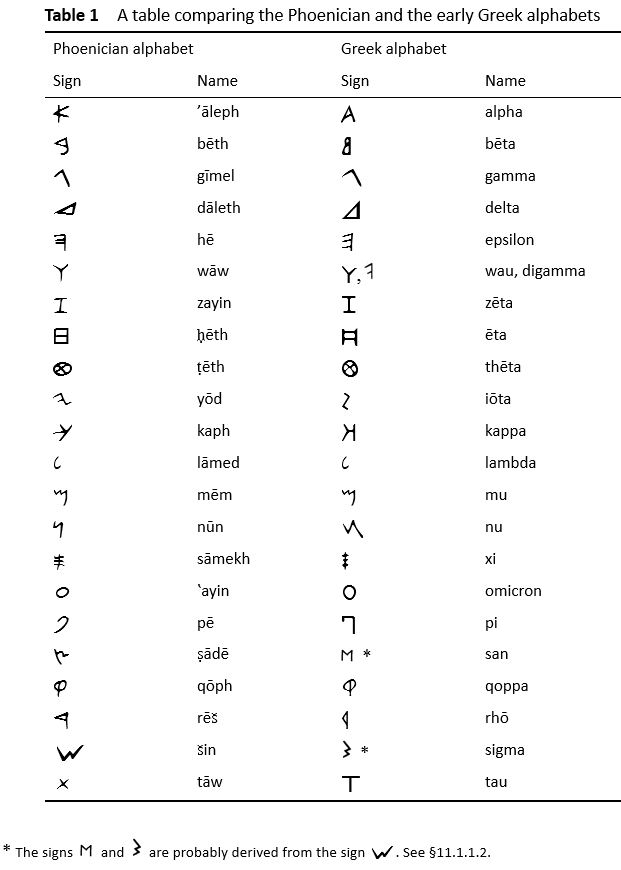1 The role of Phoenician writing in the creation of the Greek alphabet
Nobody knows for certain why, how, when, and where exactly Greek alphabetic writing began. But it is quite certain that the Greek alphabet originated from the Phoenician script. There are evidences that this is the case. The early Greek letters are very much like the Phoenician signs. The order of the letters in the Greek alphabet is basically the same as that of the signs in the Phoenician alphabet. The Greeks called their letters Phoenician signs. They even called their letters by the Phoenician names, such as alpha and bēta, even though these names did not carry any meaning in Greek, apart from referring to the letters themselves. No wonder it is commonly accepted that the Greeks learnt the alphabet from the Phoenicians. Scholars holding this view are many, including Gelb (1952:176), Jeffery (1961:1), Chao (1968:109), Higounet (1969:63), Gaur (1984:118), Sampson (1985:99), Naveh (1987:175), DeFrancis (1989:175), Coulmas (1989:162), Healey (1990:35), Powell (2009:230), and Gnanadesikan (2009:208).
As can be shown by the table below at the end of this section, there is a striking resemblance between the Phoenician signs and the early Greek letters, and the names of many Greek letters are derived from Phoenician. The order of the signs in the two alphabets is essentially the same.
As regards the shapes of the Phoenician signs and the early Greek letters, it can be said that the signs in the table are quite representative of the Phoenician signs written in Phoenicia in the tenth and ninth centuries BC and the early Greek letters written in Greece in the eighth and seventh centuries BC. It should be noted that during the said periods the Phoenician signs are quite uniform in shape whereas the Greek letters have variant forms in different dialect areas.
The ancient Greeks called the early Greek letters phoinikeia grammata ‘Phoenician signs’. The Greek word phoinikeia is derived from phoinix, one meaning of which is ‘red’. The Greeks called Phoenicia phoinike ‘country of purple cloth’ and the people coming from that country phoinikes ‘Phoenicians’. By phoinikes they probably referred to the people selling purple cloth from Phoenicia, a territory which is roughly equivalent to today’s Lebanon. The Phoenicians, however, called themselves Canaanites and their land Canaan, an area which in those days probably covered modern-day Lebanon, Israel, the Palestinian territories, the western part of Jordan, and southwestern Syria.

(25 December 2016)
Views: 1124